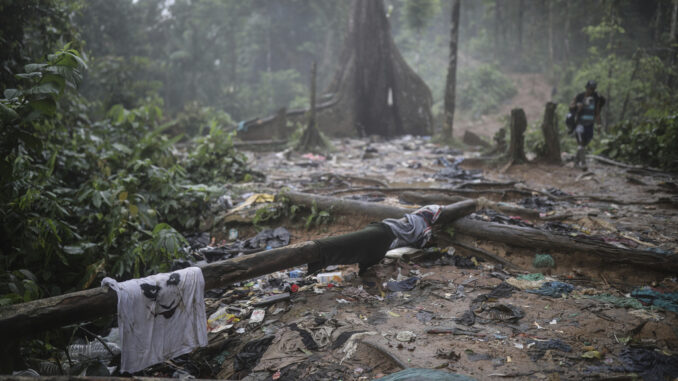
Once nearly impenetrable for migrants heading north from Latin America, the jungle between Colombia and Panama this year became a speedy but still treacherous highway for hundreds of thousands of people from around the world.
Driven by economic crises, government repression and violence, migrants from China to Haiti decided to risk three days of deep mud, rushing rivers and bandits. Enterprising locals offered guides and porters, set up campsites and sold supplies to migrants, using color-coded wristbands to track who had paid for what.
Enabled by social media and Colombian organized crime, more than 506,000 migrants — nearly two-thirds Venezuelans — had crossed the Darien jungle by mid-December, double the 248,000 who set a record the previous year. Before last year, the record was barely 30,000 in 2016.
Dana Graber Ladek, the Mexico chief for the United Nation’s International Organization for Migration, said migration flows through the region this year were “historic numbers that we have never seen.”
In Washington, the debate has shifted from efforts early in the year to open new legal pathways largely toward measures to keep migrants out as Republicans try to take advantage of the Biden administration’s push for more aid to Ukraine to tighten the U.S. southern border.
The U.S. started the year opening limited spaces to Venezuelans — as well as Cubans, Nicaraguans and Haitians — in January to enter legally for two years with a sponsor, while expelling those who didn’t qualify to Mexico. Their numbers dropped somewhat for a time before climbing again with renewed vigor.
After discovering that Nicaragua had lax visa requirements, Cubans and Haitians poured into Nicaragua on charter flights, purchasing roundtrip tickets they never intended. Citizens of African nations made circuitous series of connecting flights through Africa, Europe and Latin America to arrive in Managua to start travelling overland toward the United States, avoiding the Darien.
Adam Isacson, an analyst tracking migration at the Washington Office on Latin America, said that Panama, Costa Rica and Honduras grant migrants legal status while they’re transiting the countries, which have limited resources, and by letting migrants pass legally the countries make them less vulnerable to extortion from authorities and smugglers.
Then there are Guatemala and Mexico, which Isacson called the “we’re-going-to-make-a-show-of-blocking-you countries” attempting to score points with the U.S. government.
For many that has meant spending money to hire smugglers to cross Guatemala and Mexico, or exposing themselves to repeated extortion attempts.
Mexico’s immigration system was thrown into chaos on March 27, when migrants held in a detention center in the border city Juarez, across from El Paso, Texas, set mattresses on fire inside their cell in apparent protest. The highly flammable foam mattresses filled the cell with thick smoke in an instant. Guards did not open the cell and 40 migrants died.
The immigration agency’s director was among several officials charged with crimes ranging from negligence to homicide. The agency closed 33 of its smaller detention centers while it conducted a review.
Unable to detain many migrants, Mexico instead circulated them around the country, using brief, repeat detentions, each an opportunity for extortion, said Gretchen Kuhner, director of IMUMI, a nongovernmental legal services organization. Advocates called it the “politica de desgaste” or wearing down policy.
